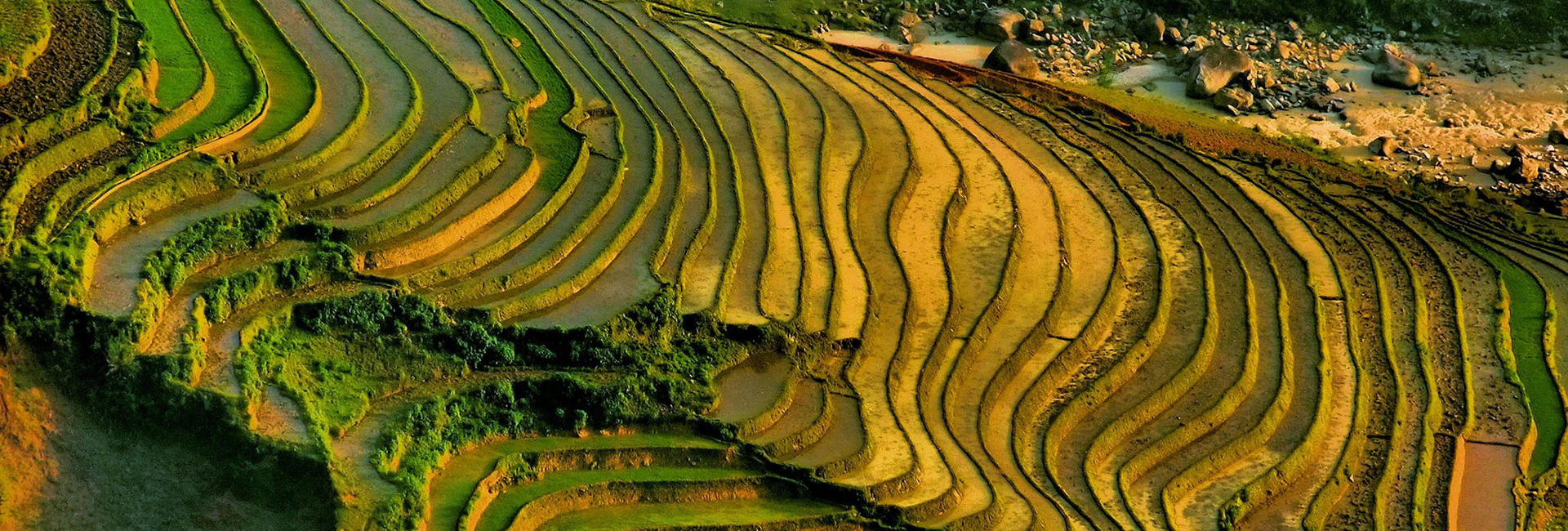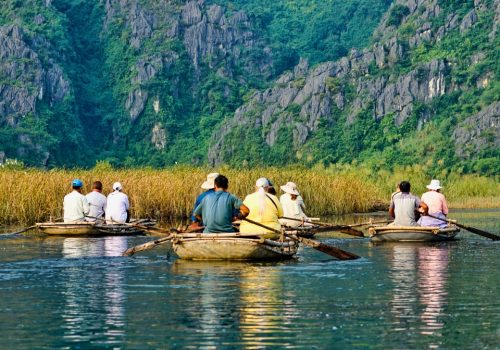Muong Hoa Valley is one of the most beautiful destinations in Sapa, Vietnam. Known for its breathtaking terraced rice fields, ancient rock formations, and rich cultural heritage, this valley offers a unique experience for those seeking natural beauty and local traditions. Whether you enjoy trekking through picturesque landscapes, visiting remote villages, or tasting delicious mountain cuisine, Muong Hoa Valley has something for everyone.
What you will find in this travel blog:
- Get to know about Muong Hoa Valley
- When is the best time to visit Muong Hoa Valley?
- How to get to Muong Hoa Valley?
- What to do and see
- What to eat in Muong Hoa Valley
- Tips to beat the crowds
- Nearby attractions
Get to know about Muong Hoa Valley
Nestled in the heart of Sapa, Muong Hoa Valley is a breathtaking destination known for its terraced rice fields, ethnic minority villages, and picturesque landscapes. The valley stretches along the Hoang Lien Son mountain range and is home to various ethnic groups, including the H’Mong, Dao, and Giay communities. Their unique customs, traditional stilt houses, and vibrant clothing add to the cultural richness of the valley.
Surrounded by rolling hills and lush greenery, Muong Hoa Valley offers a refreshing escape from the hustle and bustle of city life. A small, winding stream flows through the valley, enhancing its natural charm. The valley is an ideal place for those who appreciate nature, local culture, and scenic views. Whether you’re taking in the sight of golden rice terraces or exploring peaceful villages, Muong Hoa Valley offers an unforgettable experience.
What can you expect in Muong Hoa Valley?
- Magnificent terraced rice fields – A stunning sight that changes with the seasons
- Local ethnic villages – Discover the rich traditions of the H’Mong, Dao, and Giay people
- Muong Hoa Stream – A gentle, winding waterway that enhances the valley’s beauty
- Ancient rock field – A mysterious archaeological site with centuries-old carvings
- Trekking routes – Trails that offer panoramic views of the valley
- Traditional markets – A chance to shop for handmade crafts and taste local specialties
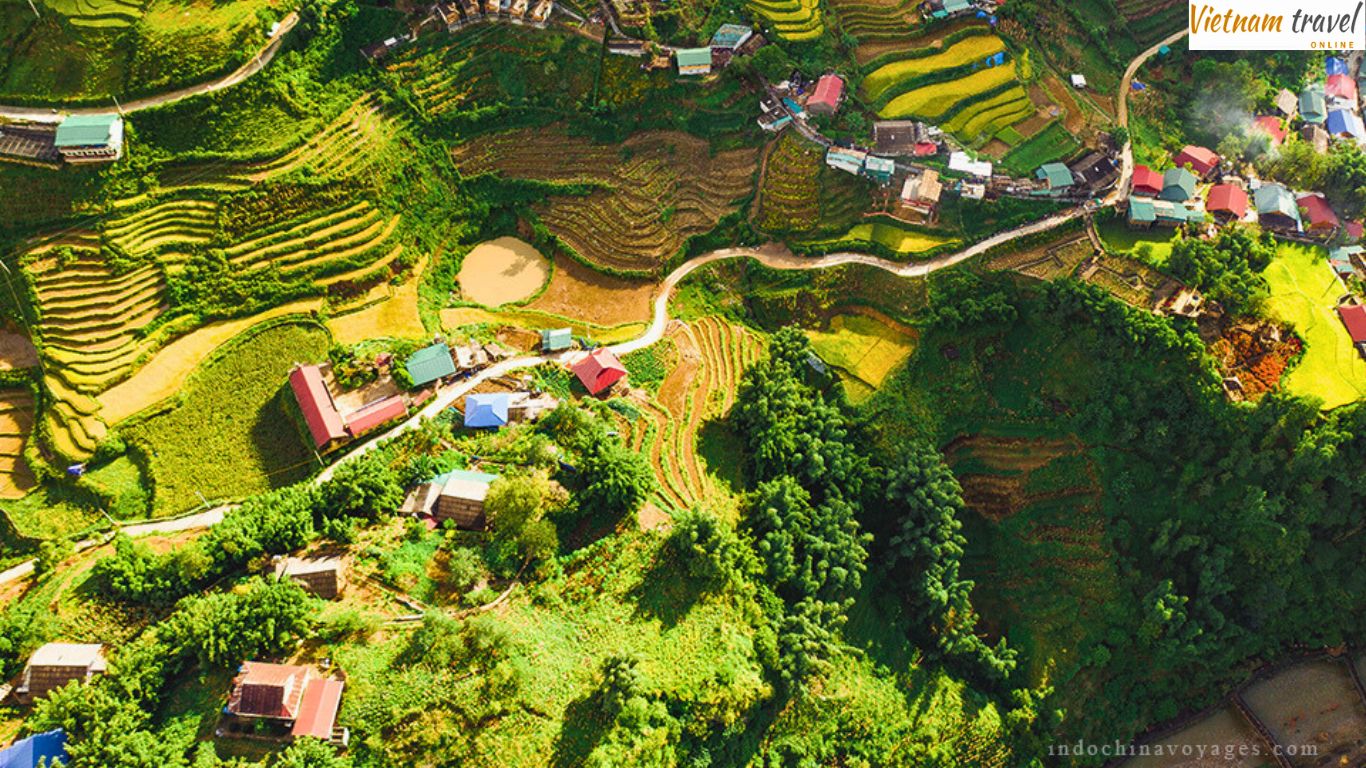
When is the best time to visit Muong Hoa Valley?
You can visit Muong Hoa Valley at any time of the year, but the best seasons to explore this natural wonder are spring and autumn.
From March to May, the valley is at its most vibrant. The mild weather, fresh greenery, and blooming flowers create a stunning landscape. This is also the time when local farmers begin planting rice, making the terraced fields a beautiful shade of green. Additionally, many ethnic festivals take place, offering a glimpse into the unique traditions of the region.
From September to November, the valley transforms into a golden paradise. The ripe rice fields stretch endlessly, filling the air with a sweet fragrance. This is the perfect season to witness the breathtaking beauty of Muong Hoa Valley and capture stunning photographs of the harvest season.
If you visit between December and February, you’ll experience a different side of Muong Hoa Valley. The weather is cold, and in some years, snowfall covers the valley, creating a surreal and romantic landscape. This period is also the peach blossom season, making it an excellent time for photography lovers.
Each season in Muong Hoa Valley has its own charm, offering unique experiences whether you prefer the lush greenery of spring, the golden hues of autumn, or the winter wonderland in the colder months.
How to get to Muong Hoa Valley?
From Hanoi to Sapa
To reach Muong Hoa Valley, you first need to get to Sapa. The most common ways to travel from Hanoi to Sapa include:
Train: The overnight train from Hanoi to Lao Cai takes around 8 hours, costing between US$29 and US$35 (725000-875000 VND). Upon arrival at Lao Cai station, you’ll need to take a 1-hour bus ride (about 40 km) to reach Sapa.
Bus: A direct bus from Hanoi to Sapa takes approximately 5-6 hours, costing between US$12 and US$25 (300,000-600,000 VND). It is a convenient and affordable option.
Motorbike: If you enjoy adventure, you can rent a motorbike and ride to Sapa. However, the roads are challenging, with steep slopes and sharp turns, requiring skilled riding experience.
From Sapa to Muong Hoa Valley
Once in Sapa, Muong Hoa Valley is about 10 kilometers southeast of the town. You can choose from different travel options:
Trekking: Walking to Muong Hoa Valley is the best way to enjoy the scenery. You’ll pass through terraced fields, small villages, and picturesque landscapes along the way.
Motorbike: Renting a motorbike allows you to explore the valley at your own pace. The rental fee is around US$4 (100,000 VND) per day. However, the roads are narrow and winding, so experienced riding skills are recommended.
Car: Hiring a private car or taxi is a comfortable option, especially if you are traveling with family or in a group. Some high-altitude areas might not be accessible by car, but there are scenic viewpoints along the way where you can stop and admire the valley.
Train: While there is no direct train to Muong Hoa Valley, the train from Hanoi to Lao Cai is a scenic option, followed by a bus or car ride to the valley.
For your safety, if you’re not confident in your driving abilities on mountain roads, hiring a local driver or joining a Sapa tour is better for you. The roads can be particularly challenging during rainy seasons when visibility is poor and surfaces become slippery.
What to do and see
The mesmerizing rice terraces
Muong Hoa Valley is famous for its stunning rice terraces that stretch across the hillsides. These terraces, shaped by generations of local farmers, create a spectacular landscape that changes with the seasons. In spring and summer, the fields are covered in lush green, while autumn transforms them into a golden paradise.
These terraces have been recognized as a National Heritage Site in Vietnam. A trekking tour through the valley allows you to witness traditional farming methods and even participate in activities like planting or harvesting rice.
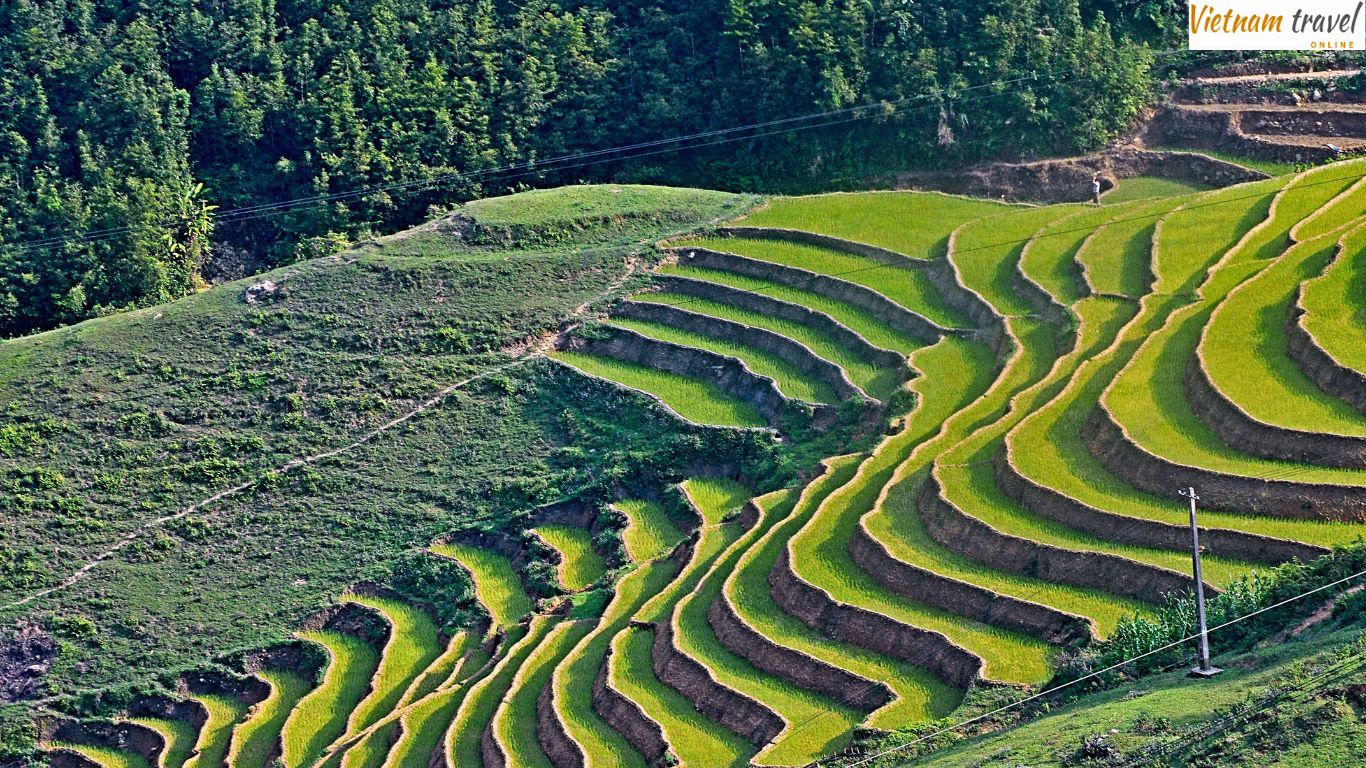
The mysterious ancient rock field
Scattered throughout the valley are nearly 200 ancient rocks, many of which are engraved with mysterious symbols and carvings. These stones, believed to be over 2,000 years old, have puzzled researchers for decades.
Some experts suggest that they were used for religious or astronomical purposes by ancient civilizations. The rock field covers an area of about 8 square kilometers and is considered an important historical site in Vietnam.
Unique cultural experiences
Muong Hoa Valley is home to several ethnic minority communities, including the H’mong, Dao, and Giay people. These groups have lived in the valley for generations, preserving their unique traditions and customs.
You can learn about their way of life through cultural tours, which include wearing traditional clothing, participating in folk dances, and enjoying local cuisine. Engaging with the local people offers a deeper understanding of Vietnam’s diverse cultural heritage.
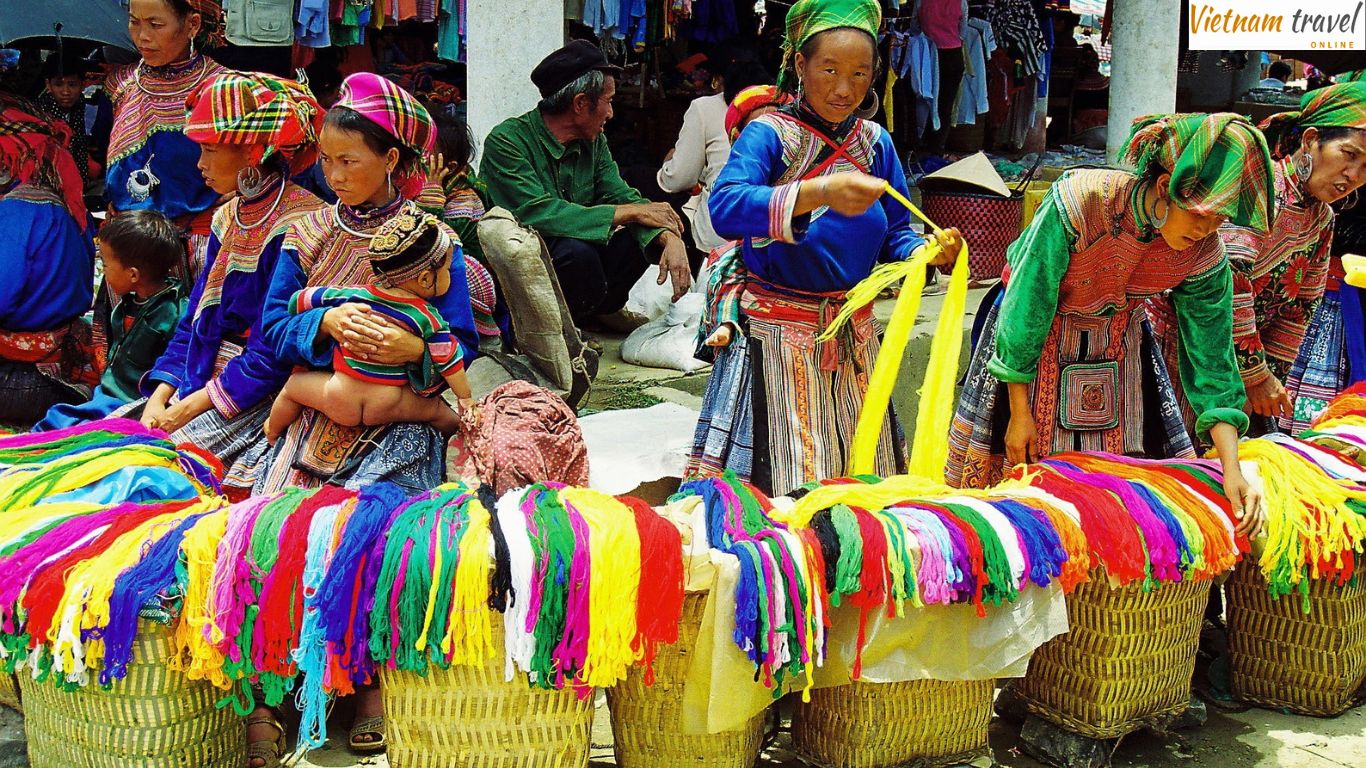
Exxplore local villages
Muong Hoa Valley is home to several ethnic minority villages that preserve their traditional ways of life. Each has its own distinct character:
- Ta Van Village: is primarily home to the Giay people, known for their stilt houses and warm hospitality. The village sits in a particularly beautiful section of the valley, surrounded by terraced fields. Many homestays here offer authentic experiences of local life.
- Lao Chai Village: is a Black H’mong community with spectacular views of the surrounding mountains. The villagers are known for their indigo-dyed clothing and silver jewelry crafts.
- Hau Thao Village: offers a more off-the-beaten-path experience with fewer travelers. Here, you can see traditional crafts being made and enjoy the peaceful atmosphere of rural mountain life.
In these villages, simple wooden and bamboo houses stand on stilts, surrounded by gardens and animals. Life moves at a slower pace, following the rhythms of agriculture and nature. Visiting during morning or evening hours gives you a glimpse of daily routines as families prepare meals over wood fires or tend to their crops and animals.
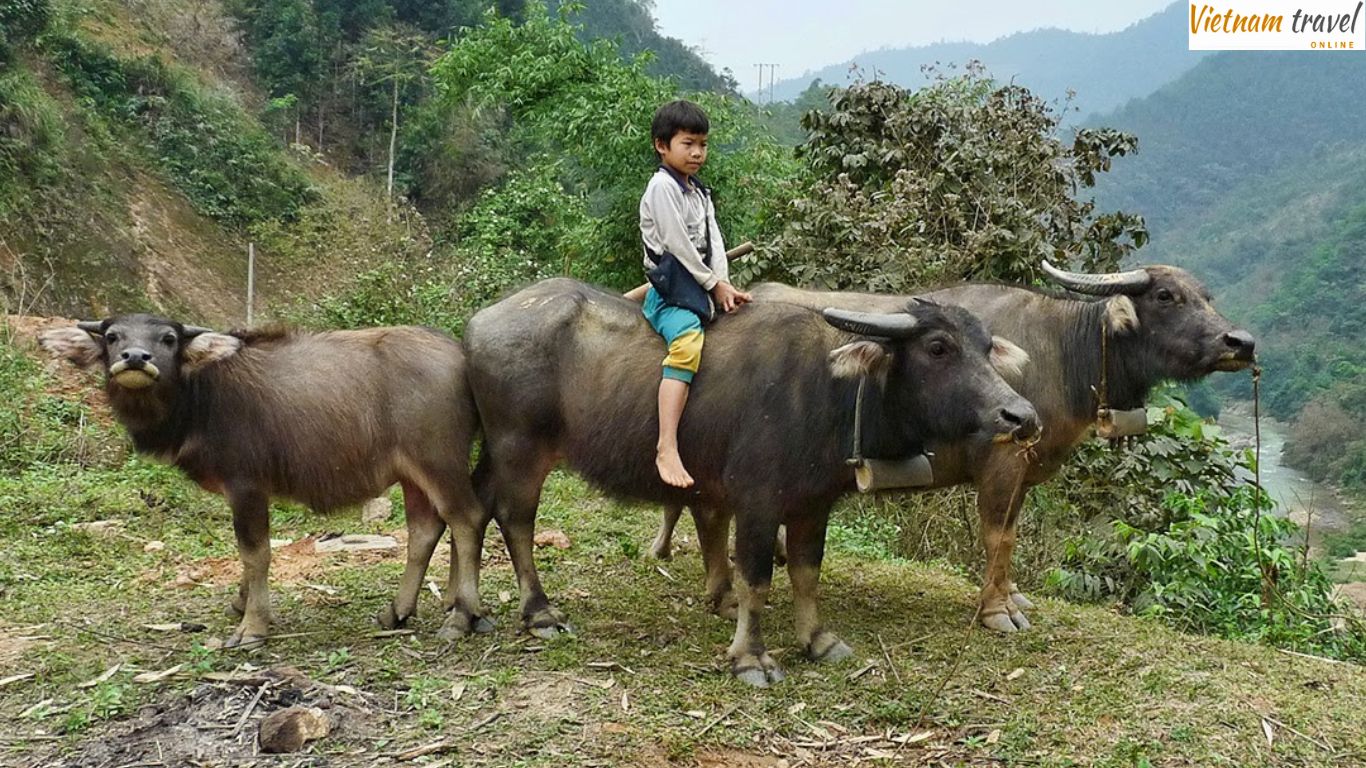
>>> Read more about Sapa villages: Top 5 Sapa villages to explore
Muong Hoa Stream
Winding through the valley for over 15 kilometers, Muong Hoa Stream adds a peaceful charm to the landscape. The stream is lined with crystal-clear ponds, small waterfalls, and lush greenery. It plays a vital role in the daily lives of the local people, providing water for irrigation and domestic use.
You can walk along the stream, cross traditional wooden bridges, or simply sit by the water and enjoy the fresh air.
>>> Maybe you wanna read more about Sapa waterfalls: Top 3 Sapa waterfalls to discover
Traditional cultural festivals
Throughout the year, Muong Hoa Valley hosts various cultural festivals that celebrate local traditions. Some of the most popular festivals include:
- Roong Pooc Festival (celebrated by the Giay people) – a New Year celebration featuring traditional dances and rituals.
- Fire Dancing Festival (celebrated by the Red Dao people) – a spiritual ceremony where men perform daring fire dances.
- Harvest Festivals – held after the rice harvest to give thanks for a good season.
Funicular experience through Muong Hoa Valley
For a different perspective on the valley, take a ride on the Muong Hoa mountain train. This modern funicular transports you above the valley floor, offering panoramic views that are impossible to capture any other way.
The short 2-kilometer journey connects Sapa town with the Fansipan cable car station. From your comfortable carriage, designed to resemble classic European trains, you’ll see the patchwork of terraced fields, villages, and forests from an elevated vantage point.
At 1,600 meters above sea level, the views on clear days extend to the Hoang Lien Son mountain range and Vietnam’s highest peak, Fansipan. The train makes the experience accessible even to those who cannot take on the physical demands of trekking.
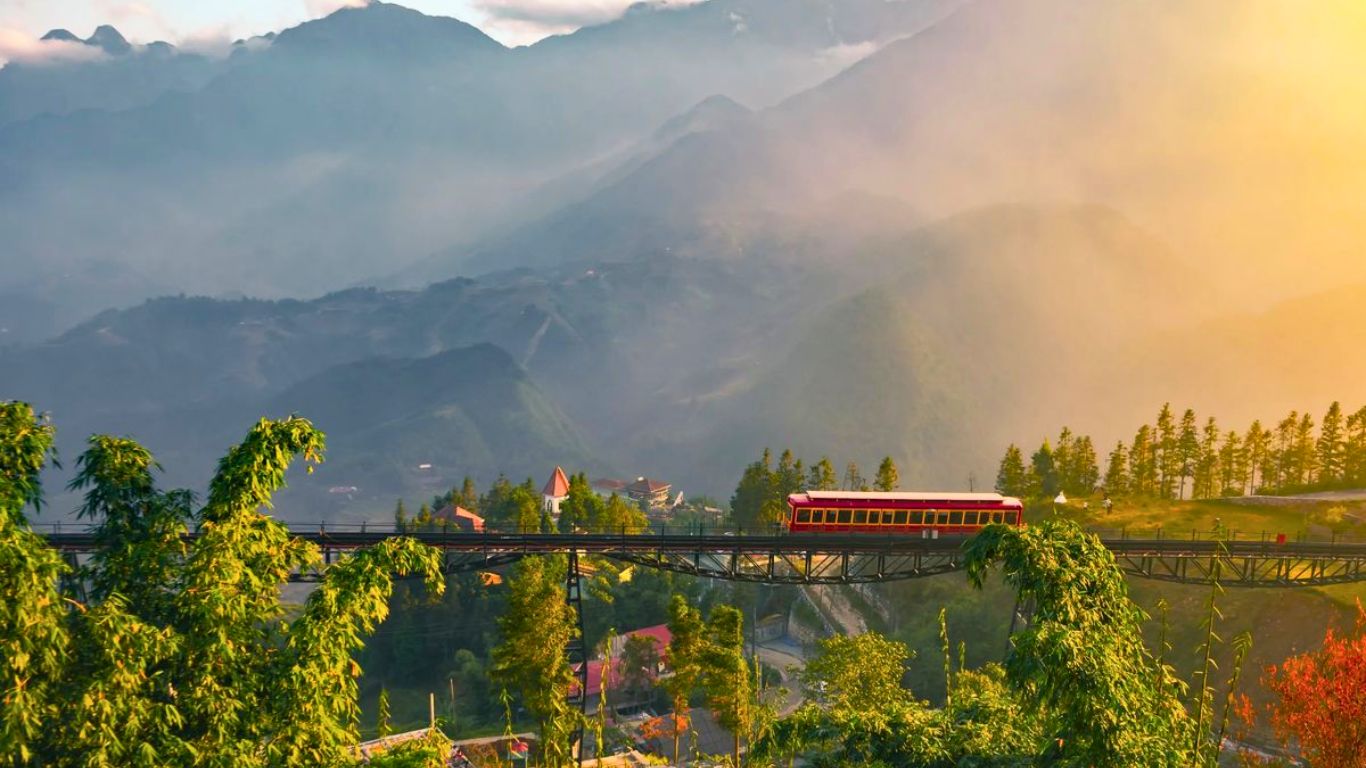
What to eat in Muong Hoa Valley
After exploring Muong Hoa Valley, treating yourself to local cuisine is essential to complete your experience. The region’s unique climate and agricultural traditions have created distinctive flavors you won’t find elsewhere. Some must-try dishes include:
Grilled stream fish
Fresh fish caught from Muong Hoa Stream itself make for a simple but unforgettable meal. Unlike farm-raised varieties, these mountain stream fish have firm, sweet meat with no fishy smell. Locals prepare them by skewering the whole fish on bamboo sticks and grilling them over charcoal.
The fish is seasoned minimally, often just with salt and local herbs, allowing the natural flavors to shine through. Each bite reveals layers of taste: slightly crispy skin gives way to tender, juicy flesh with a subtle smokiness. You’ll find this dish at many local restaurants and homestays in the valley.
Smoked buffalo meat
A specialty of the highlands smoked buffalo meat (thịt trâu gác bếp) is prepared by marinating strips of meat with spices including cardamom, ginger, and local herbs. The meat is then hung above kitchen stoves, where it slowly absorbs smoke flavor while drying.
The result is dark brown on the outside while maintaining a juicy interior with natural red coloring. When eaten, it delivers a complex flavor profile – smoky, spicy, sweet, and savory all at once. This preservation method dates back centuries, allowing mountain communities to store meat through harsh winters.
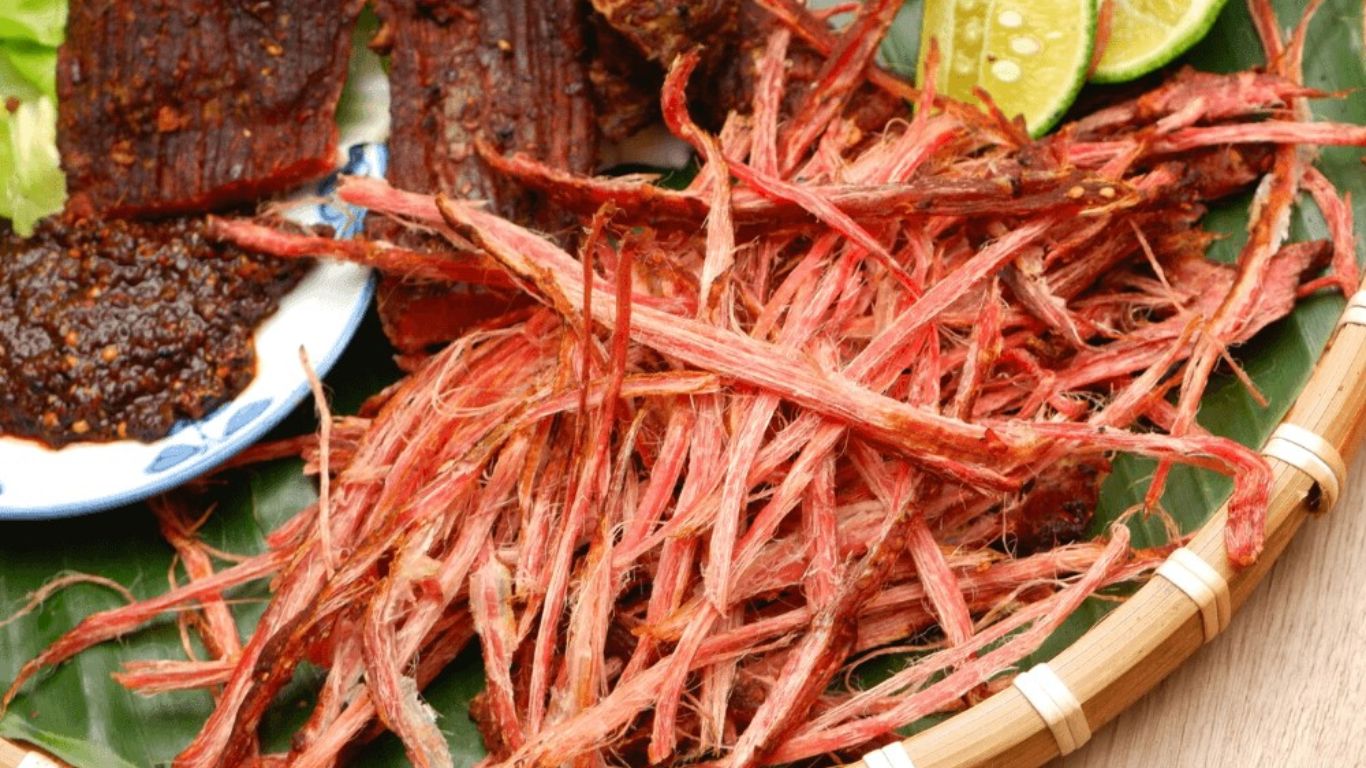
Mèo mustard greens
This local vegetable has distinctive curly, dark green leaves with a unique taste progression. Your first bite brings a slight bitterness that gradually transforms into surprising sweetness as you chew.
The traditional preparation is remarkably simple: the greens are torn by hand (never cut with a knife, which locals believe would ruin the flavor), then quickly stir-fried with a little fat and fresh ginger. This method preserves the vegetable’s distinctive texture – both crisp and tender.
You’ll often find this dish served as a side with rice or as part of a larger family-style meal. The bright, clean flavors provide perfect contrast to richer meat dishes.
Mountain mushrooms
Sapa’s high-altitude forests produce exceptional mushrooms, particularly shiitake varieties that are larger and more flavorful than those grown elsewhere. These meaty mushrooms have a distinctive earthy aroma and satisfying chewy texture.
Local cooks use them in stir-fries, hot pots, and as fillings for meat dishes. During Tet (Lunar New Year celebrations), a special dish combines these mushrooms with dried bamboo shoots to create a festive treat that symbolizes the bounty of the mountains.
For an authentic food experience, try a homestay meal where these ingredients are combined with freshly harvested vegetables, sticky rice, and local herbs to create a truly farm-to-table dining experience.
Tips to beat the crowds
Muong Hoa Valley has become one of Sapa’s most popular attractions, especially during peak seasons. Here’s how you can enjoy a more peaceful experience:
- Visit during weekdays rather than weekends when domestic travelers from Hanoi often make day trips to the area.
- Start your day early – setting out by 7:00 AM puts you hours ahead of most tour groups that typically arrive around 10:00 AM. The morning light is also magical for photography, and you’ll see villagers beginning their daily activities.
- Explore in the late afternoon after 3:00 PM when most day-trippers have already headed back to Sapa town. The golden hour light is perfect for photos, and you’ll have more peaceful interactions with locals.
- Stay overnight in a village homestay instead of making a day trip from Sapa. This lets you experience the valley during quieter morning and evening hours when tour buses are absent
- Take alternative trails – most guided tours follow the same routes from Sapa to Cat Cat to Lao Chai and Ta Van. Ask your homestay host or hire a local guide to show you lesser-known paths between villages.
- Visit during shoulder seasons – early March or late November offer similar beauty with significantly fewer travelers than peak months of April-May and September-October.
- Explore deeper into the valley beyond Ta Van village, where most day tours turn back. Villages like Hau Thao and Ban Ho see far fewer visitors.
- Hire a local guide directly from one of the villages rather than booking through Sapa town agencies. They often know hidden spots and can time your visit to avoid crowds.
- Be flexible with weather – foggy or slightly rainy days deter many visitors but can create mysteriously beautiful landscapes and dramatic photographs.
- Consider a trip on the funicular railway in early morning or near sunset when most travelers have finished their rides.
Nearby attractions
While Muong Hoa Valley could easily fill several days of exploration, the surrounding Sapa region offers many complementary attractions worth visiting. Each of these destinations showcases different aspects of the region’s natural beauty and cultural heritage.
- Cat Cat Village – A traditional H’mong village known for its cultural performances and handicrafts.
- Ham Rong Mountain – A scenic hiking spot with panoramic views of Sapa town.
- Fansipan Mountain – The highest peak in Indochina, reachable by trekking or cable car.
- Love Waterfall – A beautiful waterfall surrounded by lush greenery, ideal for nature lovers.
- Thac Bac Waterfall (Silver Waterfall) – One of the most famous waterfalls in Sapa, located just a short drive from the valley.
Muong Hoa Valley is a must-visit destination for anyone exploring Sapa. With its breathtaking terraced fields, vibrant ethnic culture, and stunning natural beauty, the valley offers an experience that is both peaceful and enriching. Whether you visit in spring, autumn, or winter, each season brings a unique charm to this spectacular landscape. Plan your trip to Muong Hoa Valley and discover one of Vietnam’s most beautiful valleys!
Mo Nguyen – From Vietnam Travel Online
Other tours you might consider
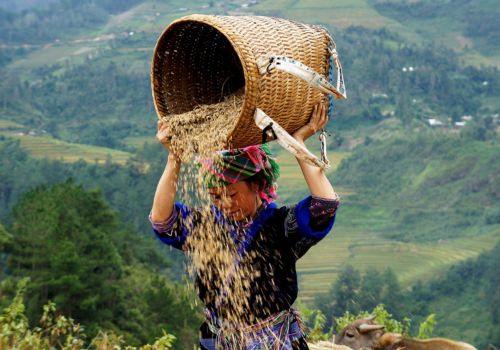
 Ha Giang - Quan Ba - Dong Van - Meo Vac - Hoang Su Phi - Bac Ha - Sapa
Ha Giang - Quan Ba - Dong Van - Meo Vac - Hoang Su Phi - Bac Ha - Sapa - Cultural, history & local learning
- Photography interest
- Eco & nature lovers

 Hanoi – Halong Bay – Sapa
Hanoi – Halong Bay – Sapa - Cultural, history & local learning
- Photography interest
- Leisure & a bit of everything


